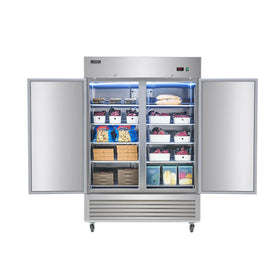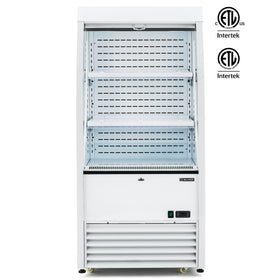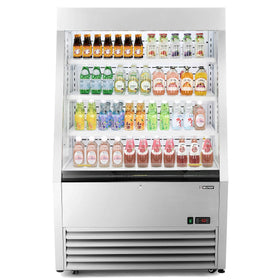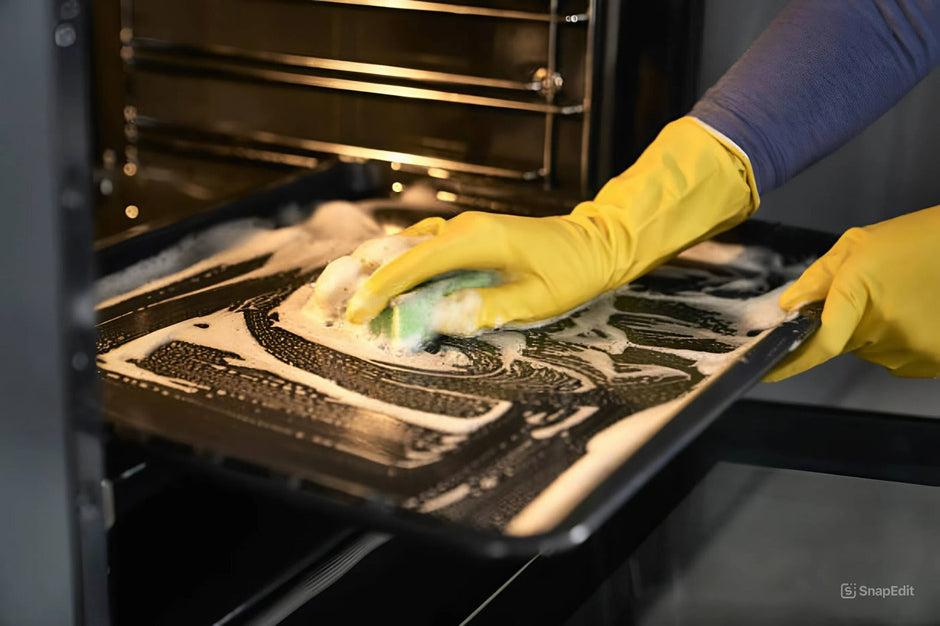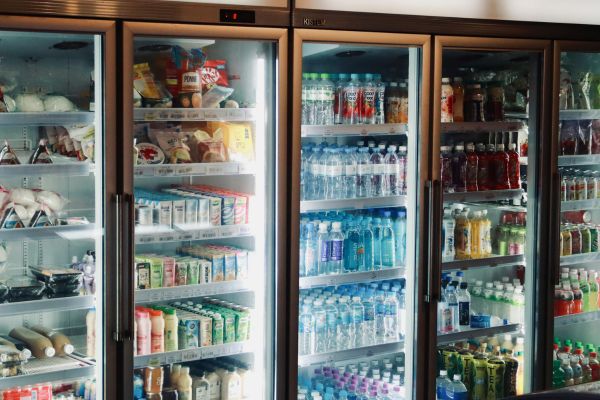If you’ve ever gone down the rabbit hole of “how to clean a commercial oven” online, you’ve probably seen a hundred conflicting methods: baking soda here, degreaser there, and a dozen different warnings about what not to do. It’s no wonder so many kitchen owners, chefs, and staff end up confused.
The truth is, cleaning a commercial oven doesn’t have to be complicated or risky. You just need the right cleaning agents, tools, and a clear step-by-step approach that fits your oven type. Here’s a practical, straightforward guide to doing it properly.

Cleaning a Commercial Oven (Step-by-Step)
Step 1: Gather What You’ll Need
Before starting, it’s best to have everything on hand so you can clean efficiently. You’ll need:
- Commercial oven cleaner or degreaser (heavy-duty and non-caustic preferred)
- Warm water and mild detergent
- Scraper or brush (nylon or brass-bristled for tough grime)
- Cleaning cloths or non-abrasive sponges
- Rubber gloves and protective eyewear
- Spray bottle for rinsing or applying cleaner
Tip: Always check your oven’s manual first. Some manufacturers specify which cleaners are safe to use-especially for self-cleaning or stainless steel units.
Step 2: Turn Off, Unplug, and Cool Down
Always start by switching off and unplugging the oven. Let it cool completely before cleaning. Cleaning while it’s still hot can not only burn you but also make cleaning products evaporate too quickly to work effectively.
Step 3: Remove Loose Parts
Take out oven racks, trays, drip pans, and side supports. These can be cleaned separately for a more thorough job. Soak them in warm, soapy water or spray with a degreaser to loosen built-up grime.
If they’re particularly greasy, let them sit for 15–30 minutes before scrubbing with a brush or scouring pad.
Step 4: Apply the Cleaning Agent Inside the Oven
Now, focus on the oven’s interior. Spray your commercial oven cleaner evenly inside (on the walls, door, and floor), but avoid the heating elements and fan motor. These parts should never be soaked or sprayed directly, as oven cleaner can damage electrical components.
Let the cleaner sit for the time recommended on the label (usually 10–20 minutes). This allows it to break down the baked-on grease and carbon deposits.
Step 5: Scrub and Wipe Clean
Use your brush or scraper to gently remove softened debris, then wipe down the surfaces with a damp cloth or sponge.
For stubborn spots, reapply the cleaner and give it another few minutes to work before scrubbing again.
Once clean, rinse with a spray bottle of warm water and wipe dry. Repeat until all residue from the cleaning agent is gone-especially if you’re using a strong commercial degreaser.
Step 6: Clean the Exterior
Don’t forget the outside. Use a mild detergent solution or stainless steel cleaner to wipe down the exterior panels, knobs, handles, and control displays. Avoid using abrasive pads that can scratch metal finishes. Wipe dry with a clean microfiber cloth for a streak-free finish.
Step 7: Clean the Accessories and Reassemble
By now, your racks and trays should be easy to scrub clean. Rinse and dry them thoroughly before placing them back inside the oven.
Ensure everything is fully dry before plugging the oven back in. Moisture left inside can affect electrical components or cause rust over time.

Bonus Tips for Easier Maintenance
- Wipe spills immediately: Cleaning daily light messes prevents tough buildup.
- Do a deep clean weekly or monthly: Frequency depends on how often your oven is used.
- Avoid harsh abrasives: Steel wool or metal scrapers can damage surfaces and coatings.
- Use oven liners where possible: These catch grease and crumbs, making cleanup faster.
Routine maintenance tips (to reduce deep-clean frequency)
- Wipe spills immediately after the oven cools.
- Empty crumb trays and drip pans daily.
- Schedule a weekly light degrease and a monthly or quarterly deep clean, depending on usage.
- Keep door gaskets clean and inspect for damage. Replace them if they are worn.
- Train your staff on immediate cleanup to avoid carbon bake-on.
Safety and Disposal Tips When Cleaning Commercial Ovens
Never mix different cleaners (e.g., chlorine bleach + acid or ammonia + caustic). Mixing solutions may encourage dangerous gases to form.
Dispose of rinse water and used cleaning solutions per local waste regulations: some heavy cleaners require hazardous waste handling.
If you get chemicals on your skin or eyes, follow the cleaner’s SDS (safety data sheet) and seek medical attention if necessary.

Commercial Oven Cleaning Tips By Oven Type
1. Cleaning Combi/steam ovens
For cleaning combi/steam ovens, it is advisable to use only manufacturer-recommended cleaners and the oven’s automatic cleaning cycles. Do not use strong caustics unless expressly allowed. These can ruin the seals and controls. Rinse cycles are critical.
2. Cleaning Deck ovens/pizza ovens
For commercial combi ovens, pay attention to certain specific areas. These often have refractory or stone floors: scrape loose debris, but avoid soaking stones (follow manual). Use high-temperature-tolerant cleaners for heavy grease on metal parts.
3. Cleaning Convection Ovens
For cleaning commercial ovens, pay particular attention to the fans. Clean fans and blowers gently; do not force water into motor housings. Remove the fan guard if the manual allows, and clean carefully.
Best Cleaning Solutions For Cleaning Commercial Ovens
- The best cleaning agents for commercial ovens are heavy-duty alkaline degreasers/oven cleaners (caustic/alkaline formulas) for baked-on grease
- Milder citrus degreasers are great for regular maintenance
- For combi ovens (use built-in cycles when available), manufacturer-approved detergents.

Final Thoughts
Knowing how to clean a commercial oven properly saves you time, extends your equipment’s life, and keeps your food tasting the way it should: without burnt residue or smoke from built-up grease.
By using the right cleaning agents, following a clear process, and keeping a regular cleaning schedule, you’ll have a spotless oven ready to handle the busiest kitchen days without a hitch.
You may also be interested in this oven safety guide on which materials to put in your oven and which not to.


